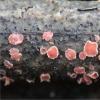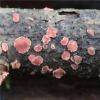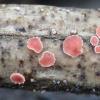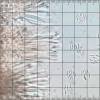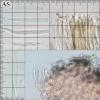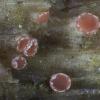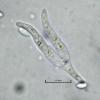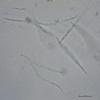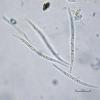
16-01-2026 00:45
Ethan CrensonHi all, On decorticated hardwood from a New York

10-01-2026 20:00
Tom SchrierHi all,We found picnidia on Protoparmeliopsis mur

13-01-2026 07:28
 Danny Newman
Danny Newman
Chlorociboria glauca on indet. decorticate logThe

08-12-2025 17:37
 Lothar Krieglsteiner
Lothar Krieglsteiner
20.6.25, on branch of Abies infected and thickened

15-01-2026 15:55
 Lothar Krieglsteiner
Lothar Krieglsteiner
this one is especially interesting for me because

13-01-2026 08:43
 Danny Newman
Danny Newman
Tricladium varicosporioides on indet. decorticate

07-01-2026 22:22
 Danny Newman
Danny Newman
Tatraea sp. on indet. hardwood The Swag, Great Sm

13-01-2026 09:10
 Danny Newman
Danny Newman
Dasyscyphella chrysotexta on indet. decorticate ha

13-01-2026 10:13
 Danny Newman
Danny Newman
Cordieritidaceae sp. on indet. wood w/ Hypoxylon s

Many thanks for the information.
I saw the similar picture on Dragisa Savic's page, but there are no microphotograps.
A small piece of twig with fungus was placed in the microscope slide, and the
fungus was shot its spores on the slide in this 8-membered groups.
The substrate is Sambucus nigra, it is absolutely sure.
I send to you some dried material if you need it for your work.
When will it (the Orbilia-paper) complete?
Attila

Thanks for sharing your find of Orbilia ficicola growing on Sambucus.
As I just found out, I forgot to send the sequence from O. ficicola to GenBank. That will be done in the coming days.
As Orbilia ficicola already has a few SNPs ( https://en.wikipedia.org/wiki/Single-nucleotide_polymorphism ) within a radius of 150 km, I would be very interested to also sequence your Hungarian find.
If this is not a problem for you, I would ask you to send me a small part of your find - a little bit of wood with about 4-5 apothecia (usually, a 1 mm diameter apothecium should be sufficient for the PCR).
BTW: A PCR works best if the fungal material is dried as quickly as possible after the discovery and sent in a "ventilated" paper bag.
I will send the remaining apothecia back to you when the sequencing is successfully completed.
Thanks a lot and best wishes for 2020.
Guy
-----
Guy Marson
45b, rue de Bettembourg
L-5810 Hesperange
Luxembourg

6. Disc ochraceous to often pinkish; hairs partly distinctly narrower in upper part, upper cell *2.5–3.3 µm wide, thin- to thick-walled; conidia with 2–4 strongly diverging, outwards curved, *3.5–4.3 µm wide arms; spores *(7.5–)8–10(–10.5) µm long ... 7
7. Basal inflation of †spores > 4× thicker than connecting part; hair cells 10–18 µm long; bark of Abutilon, tropical subhumid Hawaii .... O. abutilonis


Die beiden letzten GB- Nummern (MK473415, MK473408) sind gesperrt, wenn die nicht von mir stammen, kannst du sie ja mal schicken. Die erste Nummer (MH221053) ist als Unveryfied deklariert aber das ist genau die Seq. die ich auch hab - bis auf das dritte nt im Intron der Domain 9 der LSU: das ist ein "A" (CTATGACTCAA).
1 guten Rutsch.
Guy
Congratulations for your finds!!
You are welcome to send me some of the material (4-5 apothecia are sufficient) But it will take a while until I get results. Our ABI 3730 XL had to get new capillaries. Three weeks were planned but the exchange took almost 2 months and a lot f stuff has accumulated (...). I don't have the sequencer usage plan in mind, but in late January or early February I will be able to run one or two 96 well plates.
I wish you and all members of the forum all the best and many interesting finds for the new year 2020.
Cheers,
Guy
Did the Orbilia ficicola sample reach you in order?
I sent it a week ago.
Attila

Your material arrived a week ago (09-Ja-2020).
The first thing I tried was to find anamorphic conidia (see below).
Then I suspended an apothecium over corn meal agar (CMA) for spore discharge.
A second apothecium gave very good PCR results. The sequencing will be done later.
I sent the material back to you this afternoon. That should arrive in two working days.
Thank you very much for sending the material !
May I email the final results to your hu.g4s.com address?
Best regards,
Guy
I am glad that the examination was successful.
It is not necessary to send the sample back,
because it was divided into two parts, I kept the rest.
If you get the results, please send a mail to the attila.koszka@hotmail.com.
Many thanks for your work!
Attila
The material has arrived back to me successfully.
Thank you for everything! :-)
Best regards
Attila
I'm happy to read that the post worked well ;). Meanwhile, the culture grew quite abundantly and I hope to catch the anamorph with it. If not, you may could try the thicker part of the branch to catch some conidia? I've already examined the thin parts (the three parts you sent me). The method to find the conidia is not very complicated. If necessary (if the conidia don´t grow in culture), I will contact you by email.
Best regards,
Guy

